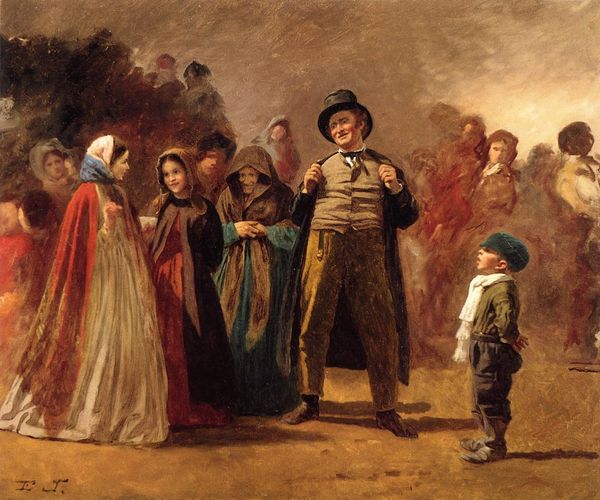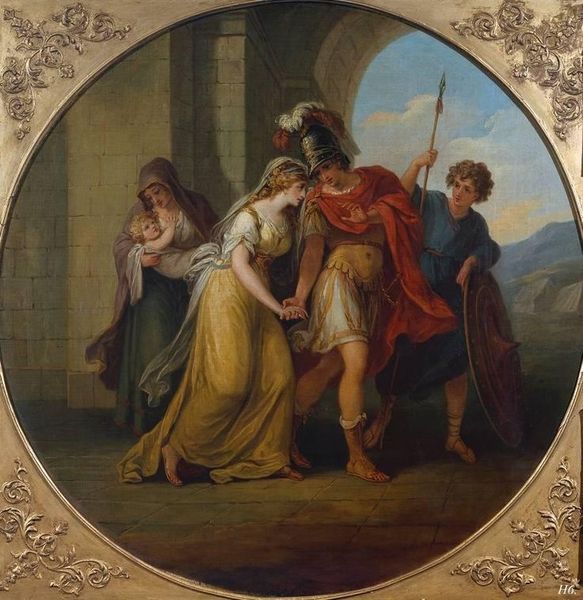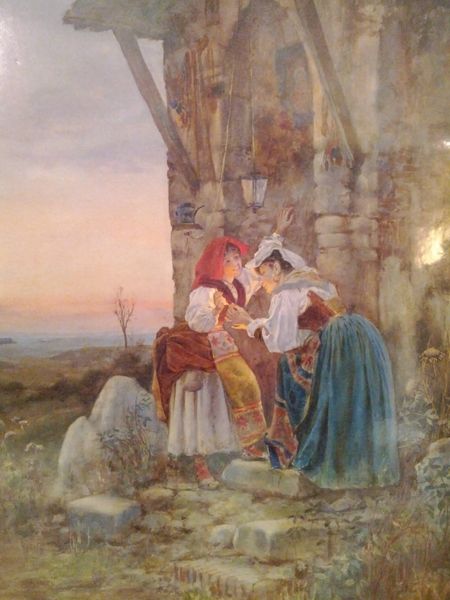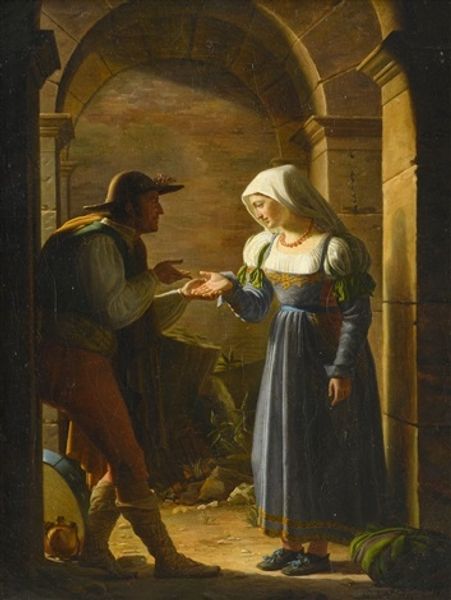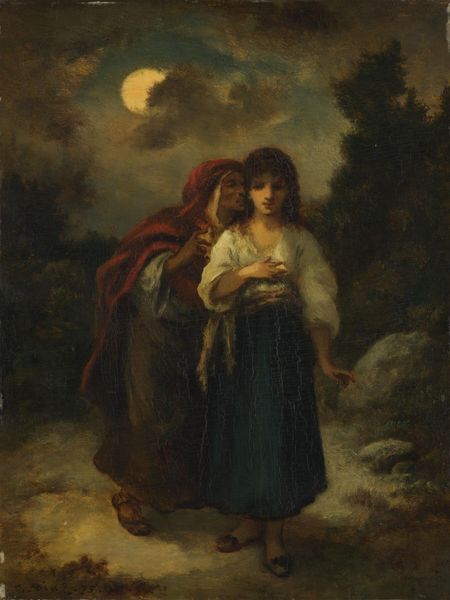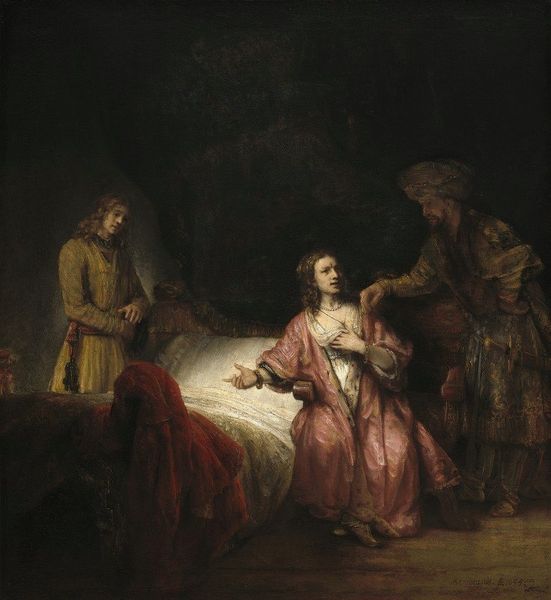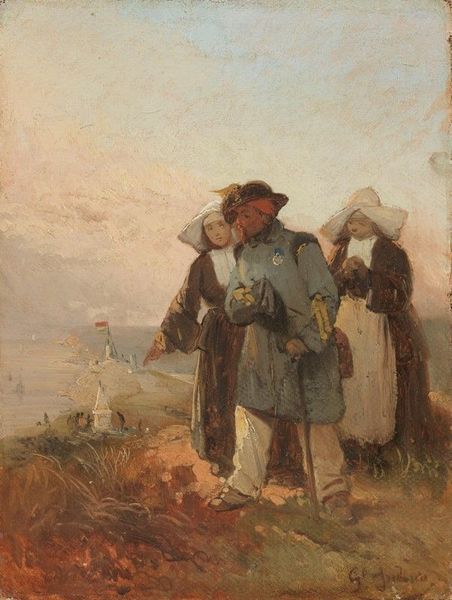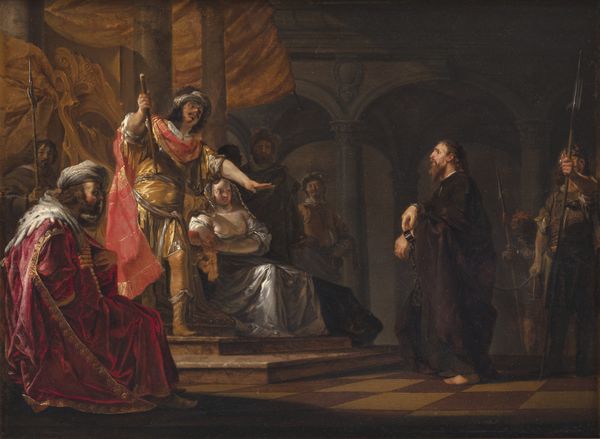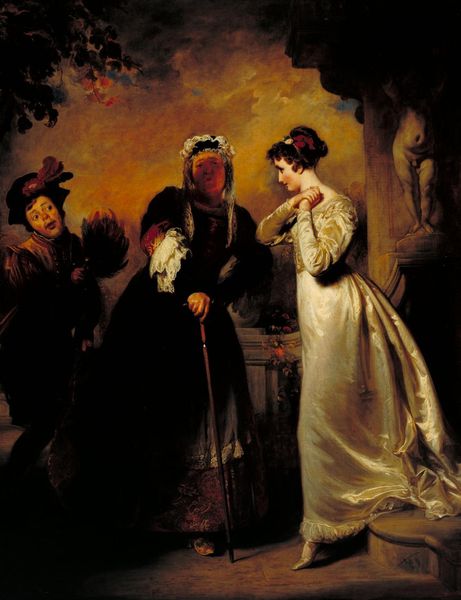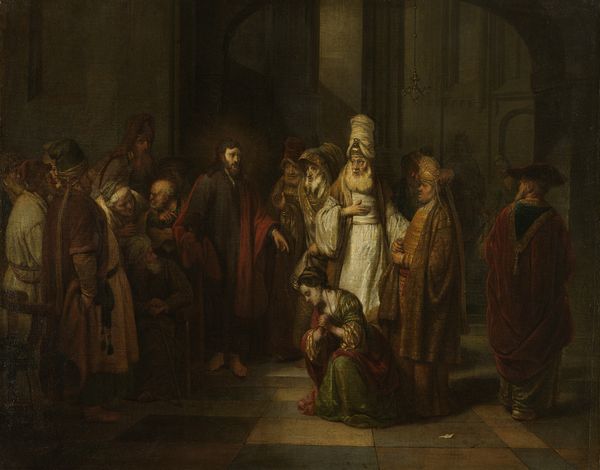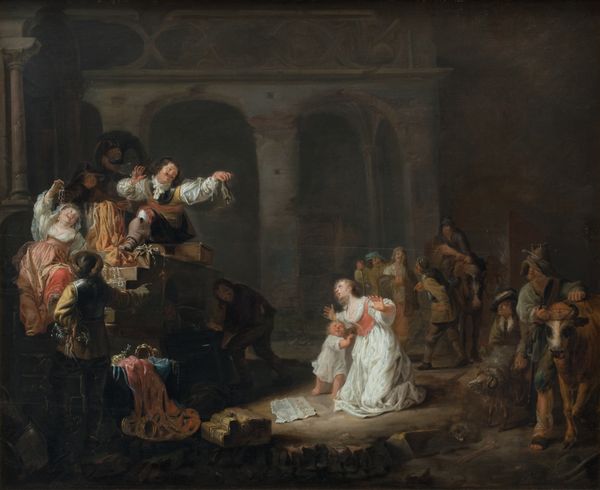
painting, oil-paint
#
portrait
#
figurative
#
narrative-art
#
painting
#
oil-paint
#
oil painting
#
romanticism
#
portrait art
Copyright: Public Domain: Artvee
Curator: Welcome. We are looking at "La Fiancée D’abydos", or "The Bride of Abydos," an oil painting crafted around 1850 by Théodore Géricault. Editor: Immediately, I notice the contrast! The dramatic dark backdrop emphasizes the figures. There's a certain tension, like a moment of decision hangs in the air. Curator: Precisely. This narrative pulls from Lord Byron's poem of the same title, a popular subject within Romanticism. Note how Géricault’s material handling builds drama: coarse brushwork in the rocky surrounds juxtaposed with finer detailing on the garments. Editor: The clothing is certainly evocative! Her veil, his turban... the artist uses specific markers to communicate the context, hinting at cultural traditions and perhaps the conflict inherent within them. It feels both intimate and theatrical. Curator: Yes, Byron's poem delves into forbidden love amidst cultural clashes. Gericault presents us with more than just figures; he's embedding Byronic symbolism of doomed romance into his pigment. We see daggers hanging in the background like signs and symbols of their inevitable demise! Editor: The very act of producing an oil painting during this era involved certain class dynamics; Géricault was tapping into Romanticism's orientalist leanings. Was he genuinely interested in a clash of cultures, or was he consuming and exoticizing this East-meets-West theme for an upper class consumer? What labor conditions were these materials even manufactured under? Curator: A critical query to bring forth, always. While your process-oriented concerns are absolutely valuable, look how Gericault used the act of depicting costume and custom as visual language! The positioning of each subject as well feels potent... almost archetypal. Their gaze tells us this is a pivotal moment, frozen forever. Editor: And those costumes... the tactile richness of those colors must have relied on global trade, and pigment creation practices of that day were far removed from today’s industrial model. The painting’s subject mirrors the consumption of labor, and global resources needed for its completion! Curator: True, the raw materials hold global ties, undeniably. Yet the scene Gericault chooses depicts how individuals navigate pre-existing beliefs, both trapped, bound to these iconographies and attempting, though failing, to act outside the bounds of it all! It's a complex commentary painted onto this canvas. Editor: A clash in the painting mirrors a clash in our modern gaze. His visual metaphors meet our materialistic analysis head on!
Comments
No comments
Be the first to comment and join the conversation on the ultimate creative platform.
